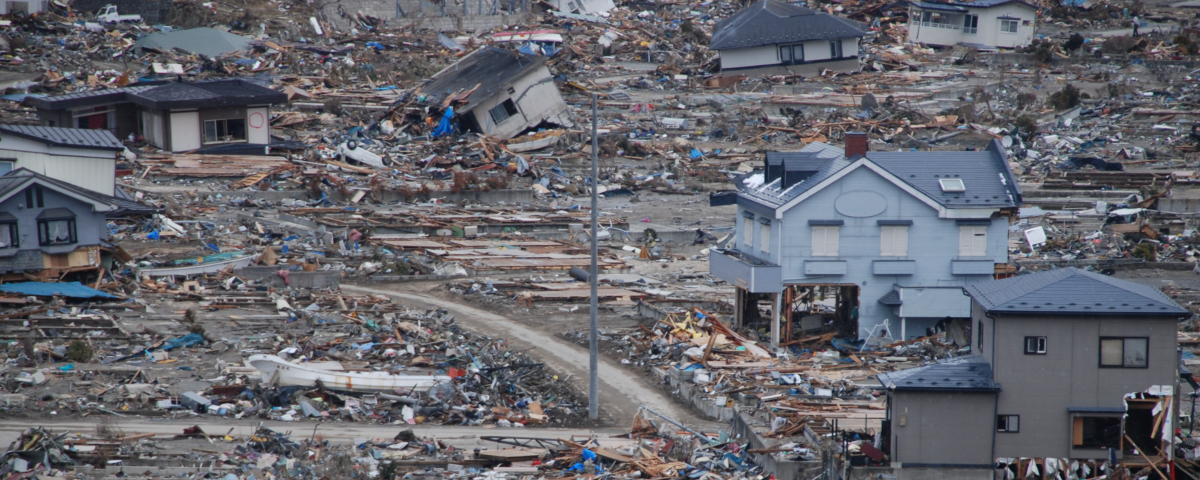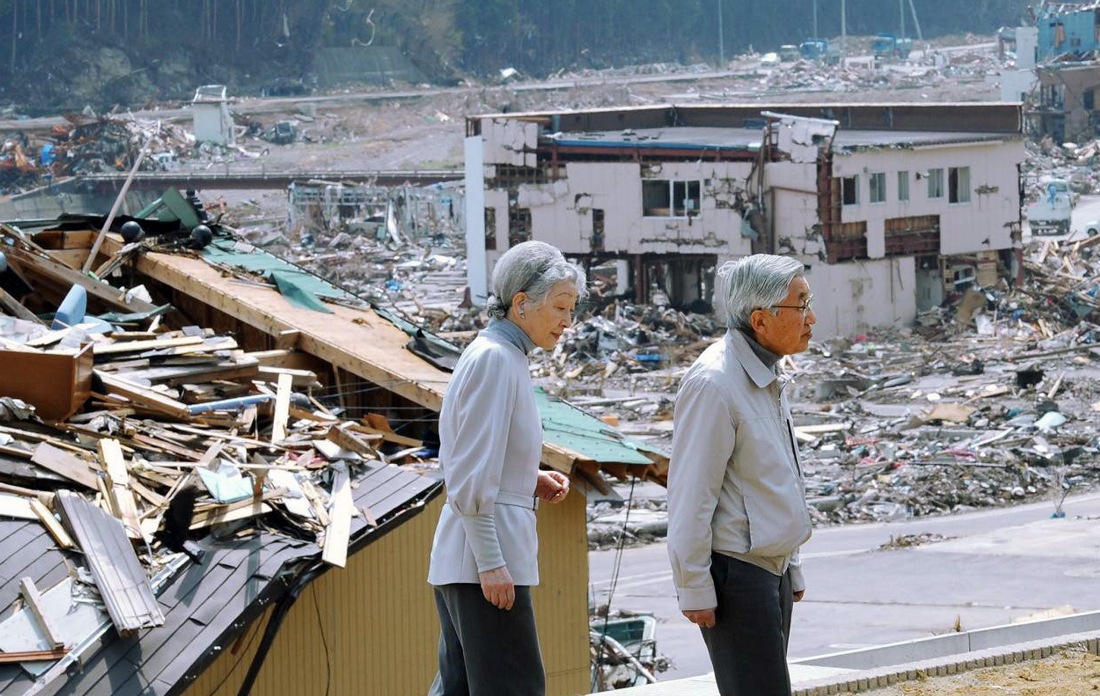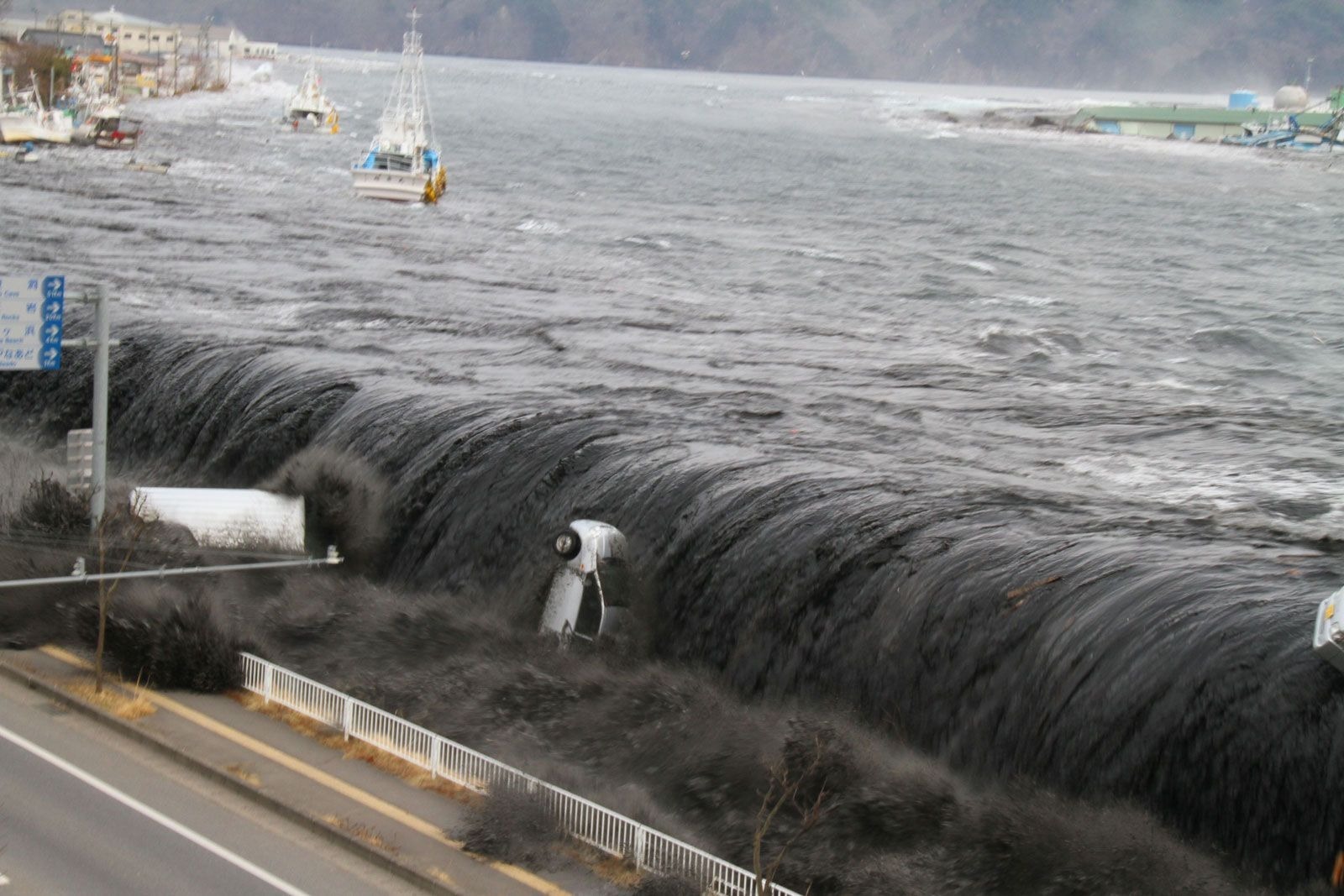It began before sunrise. A faint rumble beneath the sea. Within seconds, that subtle vibration turned into one of the most violent seismic events in modern history—a 9.1-magnitude earthquake that would shake not just buildings, but the very soul of a nation.
Most people in the affected region were still asleep when the tremors hit. Alarms sounded. Lights flickered. The ground convulsed like a living thing. But for those near the coast, the earthquake was just the beginning.
The Sea Pulled Back… Then Roared In

In a quiet port city, residents ran into the streets. Some stared in confusion as the ocean retreated—boats grounded on the exposed seabed, fish flopping where waves used to be.
Then came a sound. Low and rising. A thunderous growl from the horizon.
And then it hit: a wall of water taller than streetlights, faster than any human could run. Over 10 meters high, the tsunami smashed through sea walls, swallowed buildings whole, and dragged everything inland—cars, houses, power lines, and people.
Entire districts vanished beneath the flood.
Survivors Speak of Chaos and Silence

When the water receded, the landscape had changed completely. Streets had become rivers. Schools, hospitals, and train stations were left in ruins. Survivors stood atop rooftops, waving frantically to helicopters above. Others huddled in what was left of their homes, waiting for rescue in cold silence.
Emergency workers navigated debris-laden waters by boat, searching for life. In some towns, it was eerily quiet—no power, no cell service, no way to call for help.
And still, there were miracles.
In one heartbreaking and hopeful moment, a young boy was pulled alive from beneath the wreckage nearly 12 hours after the quake. His reunion with family brought tears to both rescuers and onlookers.
A Nation in the Dark

More than 1.5 million homes lost electricity. Countless more had no clean water, no gas, and no means of communication. The disaster had not just broken buildings—it had severed lifelines.
Hospitals were overwhelmed. Roads were torn apart. Bridges crumbled into rivers.
And for a tense few hours, an even greater threat loomed: a nuclear facility in the region had reported damage to its cooling system, prompting a 20-kilometer evacuation radius and emergency inspections from international nuclear experts.
Global Response, Local Strength

As news spread, governments from around the world pledged assistance. Rescue teams, medical units, and relief supplies were dispatched rapidly. But much of the recovery in the early hours fell on local communities—neighbors helping neighbors, strangers becoming family.
Temples, schools, and gyms became shelters. Volunteers from unaffected regions drove overnight to deliver water, blankets, and food. It wasn’t just aid. It was solidarity.
Economic Devastation and the Long Road Ahead
Early economic assessments suggest billions in damages to fishing fleets, energy infrastructure, and public transportation. In some areas, entire industries may take years to recover.
Yet economists say the country’s robust insurance systems and disaster preparedness plans—refined through decades of experience—will help stabilize the recovery.
And while rebuilding the structures may take months or years, rebuilding the spirit of a nation has already begun.
The Most Striking Part? No One Saw It Coming
Despite the region’s advanced warning systems, the scale of this event caught many off-guard. The sheer power of the earthquake, the speed of the tsunami, and the layered emergencies that followed created a perfect storm of catastrophe.
But perhaps most haunting is the reality that this could happen almost anywhere with a vulnerable coastline and shifting tectonic plates.
So where did it happen?
If you’re wondering which country this unfolding tragedy struck—read the full story and discover how a nation fought back against nature’s fury… and began to heal.
Sources:
